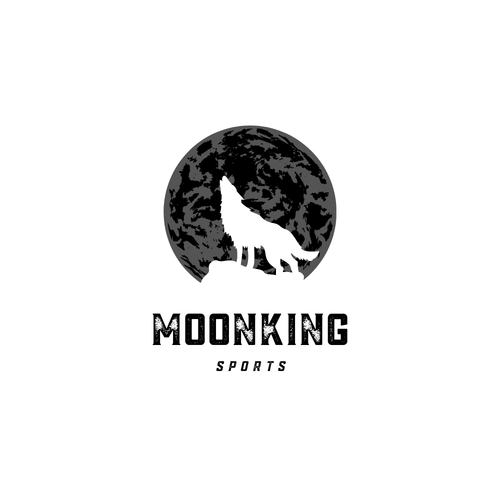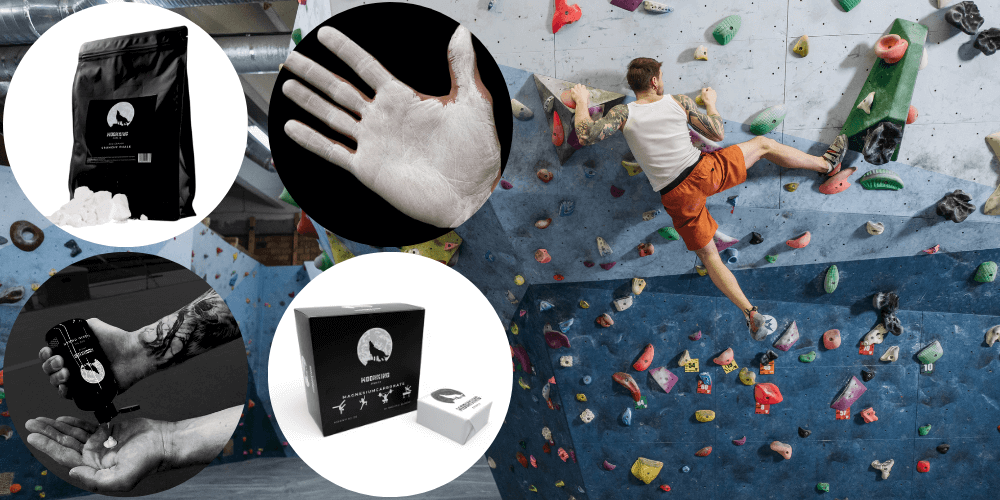No more slippery hands – time for real grip
When sweat makes your hands slippery during weightlifting, sports acrobatics, pull-ups, or functional training, it's not only annoying but also dangerous. This is where liquid chalk comes in – the clever alternative to traditional magnesia powder. This article shows you why liquid chalk should be a staple in every gym today, how it works, and how to best use it.

What is liquid chalk?
Liquid chalk , also called liquid chalk or liquid magnesia, is a modern training aid that instantly improves your grip. Instead of loose chalk powder, you use a liquid that dries on the skin and leaves a non-slip layer – no dust, no mess, and with maximum grip .
The most important components:
-
Magnesium carbonate : the real “grip booster”
-
Alcohol : ensures quick drying and has a disinfectant effect
-
Thickener : for the creamy consistency
Liquid chalk is becoming increasingly popular in the climbing scene, in strength training, in the calisthenics community, and even in gymnastics (especially in sports acrobatics) – and for good reason.
How does liquid chalk work?
The trick with Liquid Chalk lies in the evaporation of the alcohol . As soon as you apply it to your hands, the liquid evaporates in seconds. What remains is a dry, even layer of magnesium carbonate. This binds moisture and thus provides:
-
Maximum friction
-
Reliable support
-
Dry hands – permanently
Whether you're lifting heavy weights or working out on the pull-up bar, liquid magnesia stays where you need it: on your skin.
Why a strong grip improves your entire workout
A powerful grip is more than just an advantage for certain exercises—it's the foundation for many functional movement sequences. Whether it's deadlifts, pull-ups, or carrying heavy weights, the hands are often the first point of contact with the training equipment. If the grip fails, the movement cannot be executed cleanly—regardless of how strong the rest of the body is.
In addition, a secure grip automatically activates more muscle groups, as the body doesn't have to "work" to prevent slipping. This not only improves execution but also the efficiency of the exercise. Those who regularly train and support their grip will increase their long-term strength, control, and confidence during demanding workouts.
Why Liquid Chalk is a game changer in the gym
1. Improved grip strength
Whether you're doing deadlifts, bench presses, or sports acrobatics, a secure grip is the difference between success and failure. Liquid chalk gives you the necessary support.
Advantages:
-
No slipping
-
More control with heavy sets
-
Lower risk of injury
2. Cleanliness & Hygiene
Magnesia powder makes a mess – liquid doesn't. No dust on clothes, floors, or equipment.
Top for:
-
Studios with cleaning requirements
-
Allergy sufferers
-
Mobile training environments (e.g. outdoor parks)
3. Longer duration of action
Once applied, liquid magnesia often lasts for an entire training session – especially during short, intense exercise.
Pro tip: Many athletes combine a base of liquid chalk with occasional additions of classic chalk.
4. Easy & quick to use
Open the bottle, apply, wait 15-20 seconds – done.
Application tips: How to use Liquid Chalk correctly
Step 1: Clean your hands
– Remove dirt, sweat or oil residue.
Step 2: Apply a small amount
– Pea-sized is enough – one drop in the palm of your hand.
Step 3: Distribute evenly
– Rub it into your hands, fingers and back of your hands.
Step 4: Let it dry
– Wait briefly until the alcohol has evaporated (usually 15-20 seconds).
Step 5: Start training
– Get started with perfect grip!

Liquid Chalk vs. classic magnesia – a comparison
|
criterion |
Liquid Chalk |
Magnesia powder |
|
Application |
Liquid, clean |
Dusty, imprecise |
|
Drying time |
seconds |
Immediately |
|
cleanliness |
No dust, no dirt |
Dusts clothes & equipment |
|
durability |
Long lasting |
Must be renewed more frequently |
|
Studio-friendly |
Yes |
Banned in some places |
Practical experience reports
Athletes & Coaches confirm:
"Since I started using Liquid Chalk, I finally have a firm grip on pull-ups – without gloves." – Lena, CrossFit athlete
“There’s less dirt in the gym, my grip strength is better, and my hand care has become easier.” – Tim, Personal Trainer
Studies show that magnesium carbonate significantly increases friction on metal handles. This means less slipping and more control – especially when sweating.
Frequently asked questions about Liquid Chalk
Is liquid chalk suitable for sensitive skin?
Generally yes – however, the alcohol content can have a drying effect. We recommend using a moisturizing hand cream after training.
Can I use liquid chalk while climbing?
Definitely! Many climbing gyms even prefer liquid chalk because it creates less dust.
How long does a bottle of liquid chalk last?
Depending on training frequency, several weeks to months. A small amount is sufficient per application.
Is liquid chalk allowed in my gym?
Most studios allow liquid chalk—some even prefer it to powder chalk. If in doubt, ask.
Environmental friendliness & safety
Liquid chalk saves material because it 's dosed precisely and sparingly . It doesn't spread uncontrollably into the air and doesn't enter the respiratory tract—a clear advantage for health and the environment.
In addition, the alcohol it contains has a mild disinfectant effect – ideal in busy training areas.
Storage tips
-
Store in a cool and dry place
-
Close tightly after use
-
Do not get into eyes
If the bottle neck becomes sticky, simply clean it with warm water.
Conclusion: Liquid Chalk = better training
Liquid chalk isn't just a stylish accessory for ambitious athletes—it's a real performance booster . The difference is noticeable:
✔️ More grip
✔️ More control
✔️ Fewer accidents
✔️ More focus in training
Whether you're a beginner or a pro, once you've trained with liquid chalk, you won't want to go without. We consider it a must-have in every training bag.
Want to take your training to the next level? Then grab Liquid Chalk now and experience the difference – secure grip, maximum performance.









